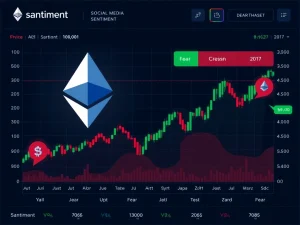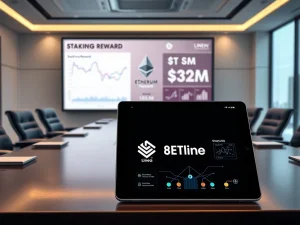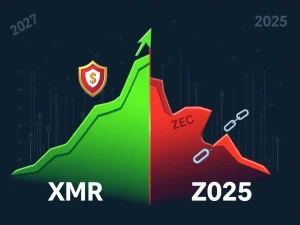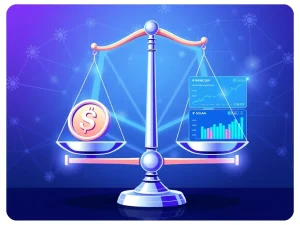Historic: Ripple Banking License Application Marks Crypto’s Rush for Legitimacy

The cryptocurrency industry is witnessing a significant shift as major players seek deeper integration with traditional finance. In a move signaling this trend, Ripple, the company behind the XRP Ledger, has applied for a US banking license. This decision, following a similar application by stablecoin giant Circle, highlights the growing push for crypto legitimacy and regulatory clarity within the United States.
Why is Ripple Seeking a US Banking License?
Ripple Labs has formally applied for a national bank charter with the U.S. Office of the Comptroller of the Currency (OCC). This application was confirmed by Ripple CEO Brad Garlinghouse. The goal is to operate under federal and state oversight, which Garlinghouse believes will establish a “new (and unique!) benchmark for trust in the stablecoin market,” particularly for their Ripple USD (RLUSD) stablecoin.
Here’s a breakdown of the significance:
- Enhanced Trust: Operating as a regulated bank under the OCC would subject Ripple to stringent compliance standards, potentially increasing confidence among institutional partners and users.
- Regulatory Alignment: The move aligns with evolving US regulatory landscapes, including recent legislative efforts around stablecoins.
- Traditional Finance Access: A banking license could smooth pathways for integration with legacy financial systems.
Ripple Follows Circle in Pursuing an OCC Bank Charter
Ripple’s application comes hot on the heels of a similar announcement from Circle Internet Group, the issuer of the USDC stablecoin. Just days before Ripple’s news, Circle applied to the OCC to create a national trust bank. Both companies are reacting to the increasing focus on regulating stablecoins at the federal level.
The U.S. Senate recently advanced the GENIUS Act, a bill designed to establish clear standards for dollar-pegged stablecoins. A key provision of this bill is that larger stablecoin issuers would fall under the oversight of the OCC. By proactively seeking an OCC bank charter, firms like Ripple and Circle are positioning themselves to comply with anticipated regulations and operate within a federally supervised framework.
What Does a Fed Master Account Mean for Ripple and RLUSD?
Beyond the banking license, Ripple is also seeking direct access to the U.S. central banking system by applying for a Master Account with the Federal Reserve. This application was made through Standard Custody, a firm Ripple acquired earlier this year.
Gaining a Fed Master Account would be a significant step, offering several potential advantages:
- Direct Reserve Holding: It would allow Ripple to hold RLUSD reserves directly with the Federal Reserve, providing an additional layer of security and stability for the stablecoin.
- Efficient Settlements: Direct access could facilitate more efficient and potentially faster settlement of transactions involving RLUSD.
- Reduced Reliance on Intermediaries: Bypassing correspondent banks for certain functions could streamline operations.
This application underscores Ripple’s commitment to building trust and resilience into its stablecoin offering by leveraging the infrastructure of the traditional financial system.
Stablecoin Regulation and the Push for Legitimacy
The applications from Ripple and Circle underscore a broader industry trend: the push for regulatory clarity and stablecoin regulation. As stablecoins gain prominence as a bridge between crypto and fiat, regulators worldwide are scrutinizing their risks and potential impact on financial stability.
The GENIUS Act in the US is just one example of this global trend. By seeking bank charters and Fed accounts, crypto firms are not just complying; they are actively trying to become part of the regulated financial ecosystem. This shift from potentially disruptive outsiders to regulated participants is a crucial step in achieving widespread crypto legitimacy and fostering deeper ties with traditional finance.
Impact on XRP Price
Following the news of Ripple’s banking license application, XRP (XRP), the digital asset associated with the XRP Ledger, saw a positive price movement. The token gained over 3% in the 24 hours surrounding the announcement, trading around $2.24 according to CoinGecko data at the time. While market reactions are complex and influenced by many factors, the news was perceived positively by many investors, suggesting that steps towards regulatory compliance and integration are viewed favorably.
Conclusion: A New Era for Crypto-Finance Integration?
Ripple’s application for a US banking license and a Fed Master Account, mirroring Circle’s recent moves, signifies a pivotal moment in the evolution of the cryptocurrency industry. These actions demonstrate a clear strategy by major crypto firms to embrace regulation and integrate with the traditional financial system, rather than remaining solely outside of it. As legislative efforts like the GENIUS Act progress, the path forward for stablecoins and the broader crypto market appears increasingly intertwined with established financial frameworks. The pursuit of an OCC bank charter and Fed Master Account by key players like Ripple and Circle is a powerful indicator of this accelerating trend towards regulatory acceptance and mainstream adoption, potentially ushering in a new era of regulated crypto-finance integration.










